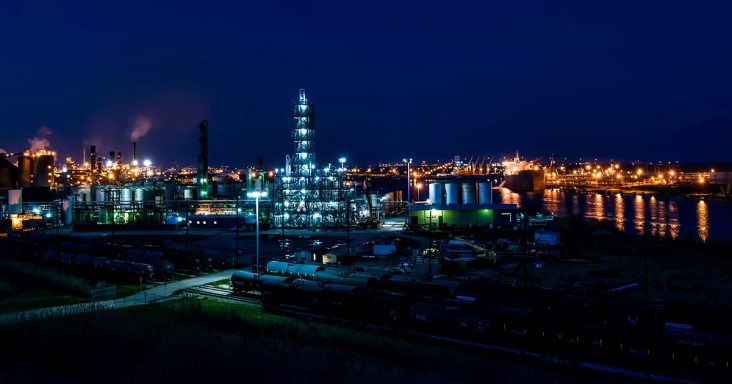Refinery runs lower than average; natural gas storage near record levels
by December 3, 2020 3:20 pm 662 views

Port Arthur, Texas, courtesy David Mark/Pixabay.
While U.S. refinery runs remain lower than the five-year average, natural gas inventories nearly reached a record high this fall, according to the U.S. Energy Information Administration (EIA).
Refinery runs have risen from the lows in April, but the continued effects of the COVID-19 pandemic and seasonal factors have contributed to runs that are lower than the five-year average (2015-19). As of Oct. 30, the runs were 14 million barrels per day, or about 13% lower than the average for this time of the year.
In April, declines in domestic demand for petroleum fuels led to a reduction in U.S. refinery operations. Since June, some refiners started to increase runs in response to a rise in demand, particularly for gasoline. By Aug. 21, gross inputs to refineries reached 15.3 million barrels per day, the highest level since April.
U.S. refinery runs typically reach a peak in mid-to-late August. Afterward, some refineries undergo seasonal maintenance while gasoline demand starts to fall, leading to reduced runs. In 2020, refinery runs fell from a peak of 15.3 million barrels per day in August to 14 million barrels per day in mid-September. The runs have been flat through October.
The Gulf Coast is the largest refining region in the United States and has been impacted by multiple storms this year. The region is the source of most U.S. petroleum exports and is more likely to be affected by less global demand for petroleum fuels.
East Coast refiners have experienced the largest decline in runs from the five-year average in percentage terms. Much of the change in East Coast refining can be attributed to the June 2019 closure of Philadelphia Energy Solutions, the region’s largest refinery, according to the EIA. The Midwest is the only U.S. region where refinery runs have been higher than the previous five-year average since April. Refinery runs in the Midwest likely rose because of increased agriculture sector demand from the fall harvest.
The amount of working natural gas in storage in the United States reached 3,920 billion cubic feet by the end of the natural gas injection, or refill, season (April 1 – Oct. 31). The amount of natural gas held in underground storage in the lower 48 states is near the record high level of 4,047 billion cubic feet, reached in mid-November 2016.
Working natural gas inventories were 2,006 billion cubic feet on April 1 or 314 billion cubic feet more than the average April 1 total in the previous five years. Higher inventory levels at the start of the injection season allowed storage operators to reach their end-of-season goals with smaller natural gas injections.
Net additions to working natural gas inventories were 1,914 billion cubic feet during the injection season, or about 2% less than the five-year average and 23% less than the near-record net injections of 2,571 billion cubic feet in the 2019 injection season.
U.S. natural gas inventories quickly rose in the spring and summer. By the week of Aug. 7, inventories exceeded the upper bound of the previous five-year average for that time of the year. Since then, the pace of weekly injections has fallen because of a decrease in natural gas production throughout 2020 and flat natural gas demand.
